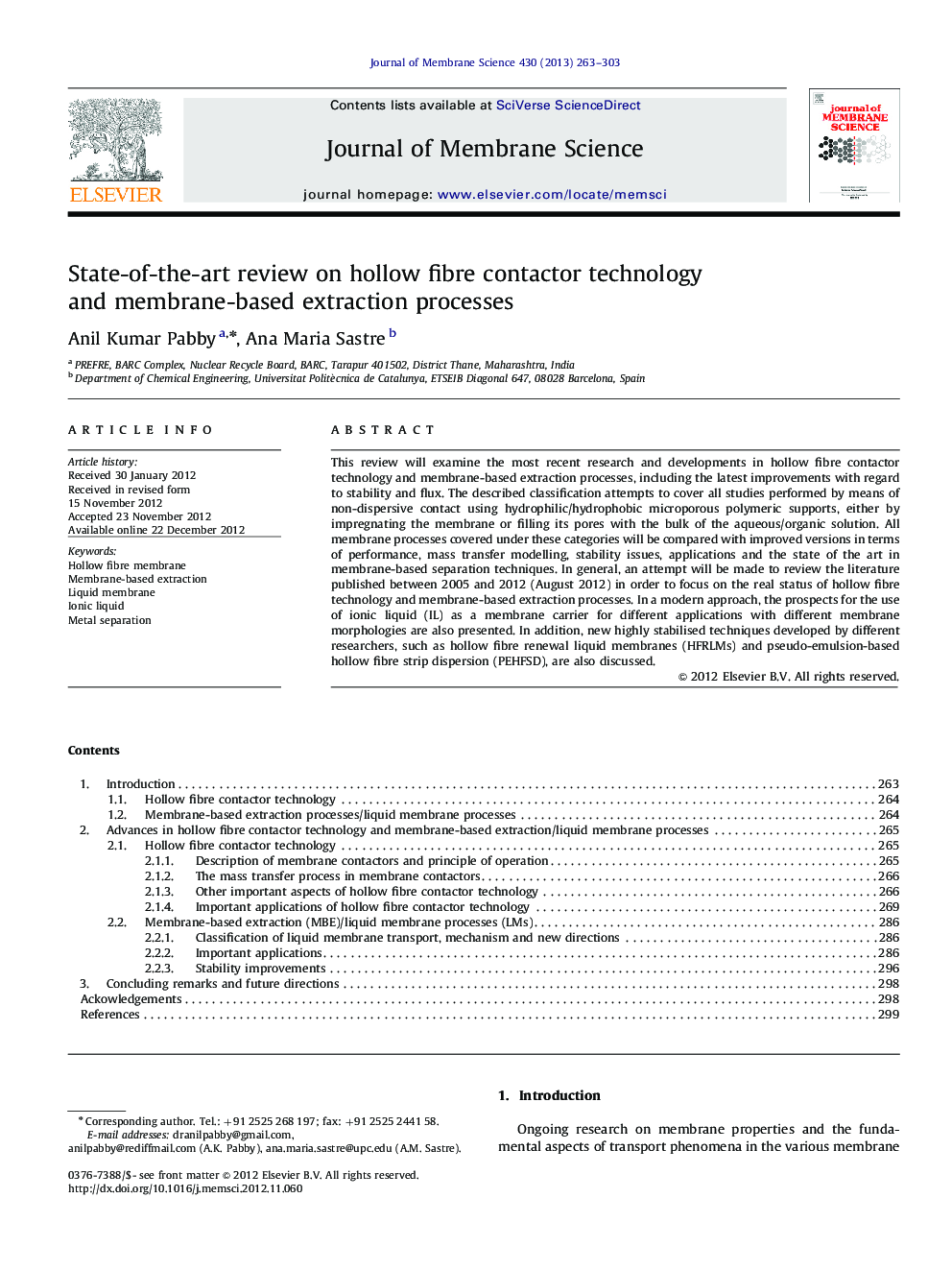| Article ID | Journal | Published Year | Pages | File Type |
|---|---|---|---|---|
| 634492 | Journal of Membrane Science | 2013 | 41 Pages |
This review will examine the most recent research and developments in hollow fibre contactor technology and membrane-based extraction processes, including the latest improvements with regard to stability and flux. The described classification attempts to cover all studies performed by means of non-dispersive contact using hydrophilic/hydrophobic microporous polymeric supports, either by impregnating the membrane or filling its pores with the bulk of the aqueous/organic solution. All membrane processes covered under these categories will be compared with improved versions in terms of performance, mass transfer modelling, stability issues, applications and the state of the art in membrane-based separation techniques. In general, an attempt will be made to review the literature published between 2005 and 2012 (August 2012) in order to focus on the real status of hollow fibre technology and membrane-based extraction processes. In a modern approach, the prospects for the use of ionic liquid (IL) as a membrane carrier for different applications with different membrane morphologies are also presented. In addition, new highly stabilised techniques developed by different researchers, such as hollow fibre renewal liquid membranes (HFRLMs) and pseudo-emulsion-based hollow fibre strip dispersion (PEHFSD), are also discussed.
► Hollow fibre based technology has grown into an accepted unit operation. ► Membrane installations for off-gas treatment is now in successful operation. ► Ionic liquids doped with amines are being commercialised for selective CO2 separation.
